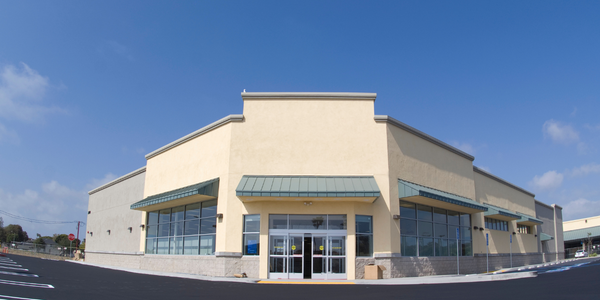Customer Company Size
Mid-size Company
Region
- Europe
Country
- Portugal
Product
- Lectra 3D Virtual Prototyping and Visualization System
Tech Stack
- 3D Virtual Prototyping
- Visualization System
Implementation Scale
- Enterprise-wide Deployment
Impact Metrics
- Productivity Improvements
- Customer Satisfaction
- Cost Savings
Technology Category
- Functional Applications - Product Lifecycle Management Systems (PLM)
- Analytics & Modeling - Predictive Analytics
Applicable Industries
- Apparel
Applicable Functions
- Product Research & Development
- Quality Assurance
Use Cases
- Predictive Quality Analytics
- Digital Twin
Services
- Software Design & Engineering Services
- Training
About The Customer
Cordeiro Campos is a family-owned textile company based in Barcelos, Portugal. Founded in 1982 by José Augusto Santos and Carolina Campos, the company initially manufactured garments for Portuguese apparel companies. Over time, it expanded to subcontracting for major international brands and eventually entered the international luxury market. The company produces womenswear, menswear, and childrenswear. With a strong focus on quality and efficiency, Cordeiro Campos has built a reputation for high-quality garments and has been recognized as one of the best small- to medium-sized businesses in Portugal.
The Challenge
Cordeiro Campos, a family-owned Portuguese textile company, faced significant challenges as it expanded into the international luxury market. The company needed to remain competitive and meet high customer expectations for quality and efficiency. Initially, the company manufactured garments by hand, which resulted in wasted time, materials, and money. The need to reduce inefficiencies and time to market became critical as the business grew rapidly.
The Solution
Cordeiro Campos partnered with Lectra in 1997, and the relationship deepened over the years. In 2010, the company adopted Lectra’s 3D virtual prototyping and visualization system to address its challenges. This technology allowed Cordeiro Campos to reduce the number of physical prototypes, saving time and material costs. The pattern-making department at Cordeiro Campos now relies heavily on Lectra’s 3D solution, which has transformed their workflow. The ability to work with flat patterns and 3D simulations simultaneously has led to more accurate finished patterns and a more consistent fit. Lectra’s team in Portugal provided training and ongoing support, ensuring that the Cordeiro Campos team could fully leverage the technology.
Operational Impact
Quantitative Benefit

Case Study missing?
Start adding your own!
Register with your work email and create a new case study profile for your business.
Related Case Studies.

Case Study
Fire Alarm System and Remote Monitoring Sytem
Fire alarm systems are essential in providing an early warning in the event of fire. They help to save lives and protect property whilst also fulfilling the needs of insurance companies and government departments.Fire alarm systems typically consist of several inter-linked components, such as smoke detectors, heat detector, carbon monoxide, manual call points, sounders, alarm and buzzer. The fire alarm system should give immediate information in order to prevent the fire spread and protect live and property.To get maximum protection a shoe manufacturer in Indonesia opted for a new fire alarm system to monitor 13 production sites spread over 160 hectars. Although the company had an existing fire alarm system, it could not be monitored remotely.It was essential that the new system would be able to be monitored from a central control room. It needed to be able to connect to the existing smoke detector and manual call point. Information should be easily collected and passed on to the Supervisory Control and Data Acquisition (SCADA) system. Furthermore, the system should have several features such as alarm management, auto reporting, being connected to many client computers without additional cost, and run 24/7 without fails. The company also needed a system which could be implemented without changing the architecture of the existing fire alarm system.

Case Study
IoT Applications and Upgrades in Textile Plant
At any given time, the textile company’s manufacturing facility has up to 2,000 textile carts in use. These carts are pushed from room to room, carrying materials or semi-finished products. Previously, a paper with a hand-written description was attached to each cart. This traditional method of processing made product tracking extremely difficult. Additionally, making sure that every cart of materials or semi-finished products went to its correct processing work station was also a problem. Therefore, the company desired an intelligent solution for tracking assets at their factories. They also wanted a solution that would help them collect process data so they could improve their manufacturing efficiency.

Case Study
Retailer Uses RFID Scanner to Improve Efficiency
Patrizia Pepe wished to improve the logistics of their warehouse: accepting incoming goods from their production sites, movement of items throughout
the warehouse, and packaging of goods for distribution to the retail locations. They initially tried to use barcodes for this function. Because barcodes must be individually scanned within a line-of-sight, the acceptance of goods coming into the warehouse was too time consuming. Working with the University of Florence, Patrizia Pepe instituted a five-month pilot project beginning in August of 2009 to test the validity of an RFID solution. The pilot involved tagging of about 60,000 items for the second seasonal collection, and convinced the company to move forward with tagging all items.

Case Study
Monitoring and Controlling Automatic Mixing and Dispensing Machines
As technology advances, textile manufacturing has been transformed from a labor-intensive to a partially or fully automated industry. Automation is significant in all segments of textile production - from spinning to printing, and textile machinery manufacturers are constantly searching for new technologies and automation processes will increase the productivity of their machines. The color paste mixing and dispensing machine is an essential part of the printing and dyeing process. With the advantage of automatically computerized controls and database management, the system can significantly improve its dispensing precision, working efficiency and production quality as well as reducing material consumption.





